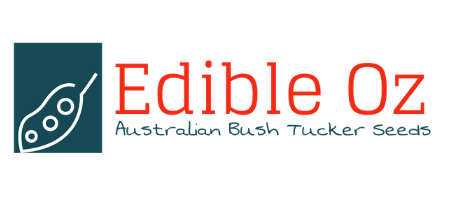
Grey Tea-Tree - Leptospermum myrtifolium (Myrtle tea-tree) seeds
Regular price
$3.95
Sale
or make 4 interest-free payments of
$0.98 fortnightly with
 More info
More info
Leptospermum myrtifolium
Common Names: Myrtle Tea-Tree
Quick Facts
- Height: Up to 2 meters
- Foliage: Grey leaves
- Flowers: Masses of white flowers (January to February)
- Seed Capsules: Large and showy
- Soil: Prefers poorly drained soils
- Habitat: Woodland, high-altitude swamps, rocky creek banks
- Tolerances: Frost, snow, well-drained soils
- Uses: Shelterbelt, revegetation, riparian plantings, ornamental
- Wildlife Attraction: Bird-attracting; nectar source for honeybees
Why Grow Leptospermum myrtifolium?
This hardy shrub thrives in challenging environments, making it a versatile choice for shelterbelts, revegetation projects, and riparian plantings. Its grey foliage and abundant white flowers provide striking visual appeal, while the plant supports native wildlife and enhances biodiversity.
Bush Food Note
-
Leaves:
- Fresh leaves are a fragrant and refreshing tea substitute.
- Nectar from flowers is gathered by honeybees, producing delicious honey.
Bush Medicine
-
Leaves:
- Crushed or infused leaves used for their antibacterial and antifungal properties.
- Traditional treatment for coughs, colds, skin infections, cuts, and insect bites.
-
Insect Repellent:
- Crushed leaves rubbed on the skin or burned to repel mosquitoes and other insects.
Medicinal Warning: Any medical or health claims about this plant are for informational purposes only. Consult a healthcare professional before use.
Other Uses
-
Bark and Branches:
- Bark used for making containers, baskets, and bark canoes.
- Branches used to craft tools like digging sticks, hunting spears, and fish traps.
How to Grow
-
Sowing Instructions:
- Direct sow in a seed-raising mix. Cover lightly with soil.
-
Planting and Care:
- Position in a sunny to partially shaded area with poorly drained soil.
- Water regularly during establishment but reduce once mature.
Uses in Your Garden
- Landscaping: The shrub's grey foliage and white flowers make it a striking ornamental plant.
- Habitat: Provides food and shelter for birds, bees, and other native wildlife.
- Revegetation: Ideal for riparian zones, shelterbelts, and biodiversity enhancement.
Germination Tips
- Success Rate: Over 70% germination.
- Timing: Best sown in autumn or spring.
- Care: Maintain consistent soil moisture during germination.
Order Now
Add Leptospermum myrtifolium to your garden for its hardy nature, stunning blooms, and multifunctional uses. A perfect choice for eco-friendly landscaping, wildlife attraction, and practical applications.
